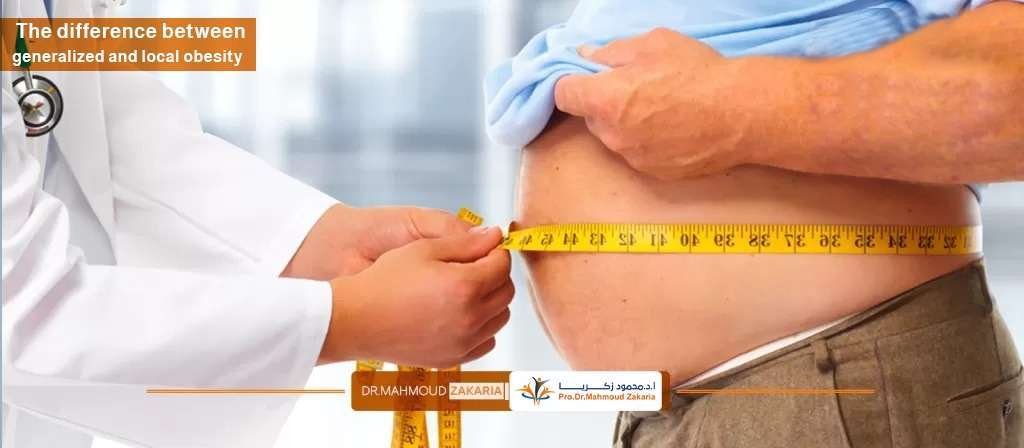Obesity (causes-symptoms-types)
There are two types of obesity (generalized obesity – local obesity)
What is obesity?
Obesity is an abnormal increase in body fat percentage that leads to many health problems.
How to calculate the ideal weight?
There are two ways to calculate your ideal weight, and they are simple, as follows:
The ideal weight = Height in centimeters – 100
For example, for a man whose height is 170 centimeters, his ideal weight is 70 kilograms but for women: the height is in centimeters, and subtract from it 105, the result is a perfect weight.
There is another medical method, which is more accurate:
Body mass index (BMI) = Weight in kilograms / the square of height in meters
Example: A person weighing 130 kg and height is 170 cm; the height in meters is converted to 1.7
BMI = 130 /1.7/ 1.7 = 45 Kg/m2
How to determine your obesity grade?
If a person’s body mass index is from 18.5 to 25 Kg/m2, then that person is at his ideal weight and it is better to keep it.
The BMI of a person from 25 to 30 Kg/m2, this person suffers from excess weight, but this is not a cause for concern, in this case, he can get rid of the extra weight through diet and sports.
BMI of a person from 30 to 35 Kg/m2, this person suffers from obesity of the first degree.
BMI of a person from 35 to 40 Kg/m2, this person suffers from second-degree obesity.
A person with a BMI of more than 40 Kg/m2 suffers from morbid obesity and requires surgical intervention
Causes of obesity:
– Genetic factors
– A hormonal imbalance or disorder.
– Wrong eating habits and lifestyle.
What is local obesity?
Local obesity is the accumulation of fat in a large area of the body (the breast area in men, and waist and buttocks areas in women). This makes the body shape inconsistent and prevents the person from wearing commonly sized clothing, which causes a great problem for both women and men.

Causes of local obesity
- Heredity is one of the factors of local obesity.
Many women have pear-shaped bodies due to genetics, so a woman may have a good weight, but has local obesity in the waist and buttocks.
- Local obesity also occurs after a diet, so the body loses a lot of weight, except for certain places where fat remains.
- Pregnancy and frequent childbirths weaken the abdominal muscle and sagging skin, which leads to the accumulation of fat.
- Athletes who go to the gym take hormones to strengthen their muscles. These hormones increase the size of the breasts and stimulate the mammary glands in men.
- Patients who have lost a lot of weight as a result of one of their surgeries, which led to sagging skin.
Methods of treating local obesity
With the great progress in science, there are many modern methods of treating local obesity:
- Liposuction.
- Excision of excessive skin
- Laser liposuction
- Removing fats with chemicals.
If the patient suffers from excessive fat accumulation in a specific area of the body, then liposuction is appropriate for them, as these fats can be suctioned safely. However, if this patient also suffers from a weak abdominal muscle with fat there, then liposuction must be performed, and the muscles must be tightened.
Laser liposuction (Vaser)
It is performed by opening a small hole which is 3 mm in the area where the fat is to be melted, in which the laser then burns the fat, and then the fat is pulled through this hole. The laser can also tighten the stretched skin (within limits) to avoid loose skin after liposuction. The patient can lose about 7 liters of fat in one session.
Removing fats with chemicals
After identifying the body areas with local obesity, these areas get injected with chemicals that effectively dissolve fats. Then there is a waiting time of 15 minutes for these chemicals to interact with the fats, and these fats are then withdrawn.
Reading MORE: What are the advantages of sleeve gastrectomy?

